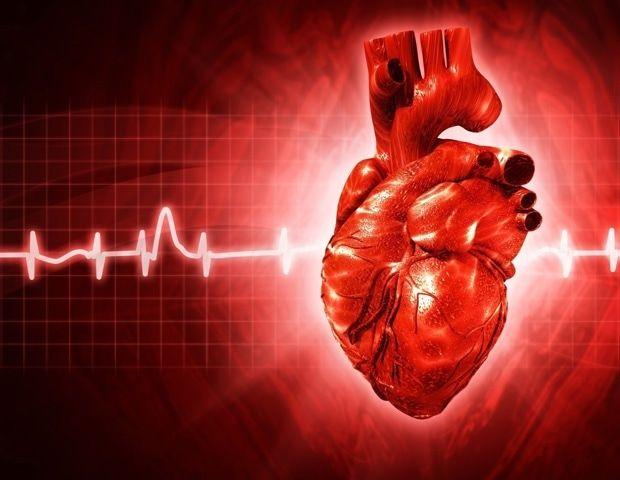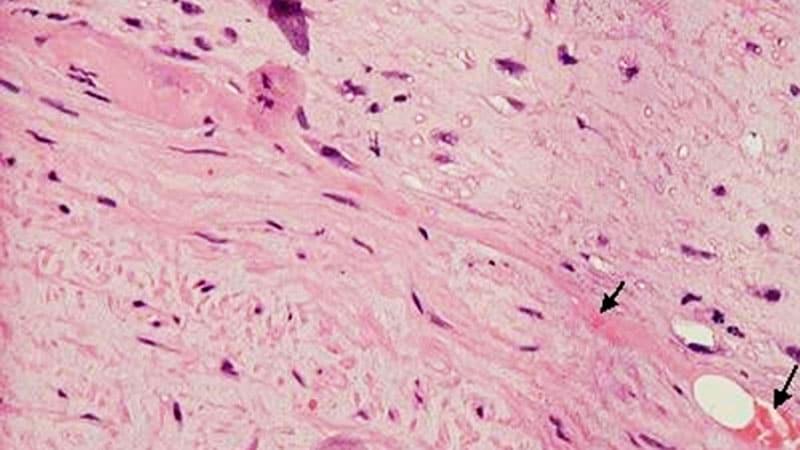Yale Researchers Develop AI Algorithm to Detect Structural Heart Disease Using Smartwatch ECG Data
5 Sources
5 Sources
[1]
App Turns Smartwatch Into Detector of Structural Heart Disease
An app that uses an AI model to read a single-lead ECG from a smartwatch can detect structural heart disease, researchers reported at the 2025 Scientific Sessions of the American Heart Association. Although the technology requires further validation, the researchers said it could help improve the identification of patients with heart failure, valvular conditions, and left ventricular hypertrophy before they become symptomatic, which could improve the prognosis for people with these conditions. "This is the first study that has shown the potential to detect multiple structural heart diseases from real-world smartwatches," Arya Aminorroaya, MD, MPH, an internal medicine resident at Yale New Haven Hospital, New Haven, Connecticut, who led the work, told Medscape Medical News. Structural heart disease typically goes undetected for years, Aminorroaya said, and patients tend not to get diagnosed until they become symptomatic. "We are missing the asymptomatic window of these diseases where we could intervene earlier, potentially changing the trajectory of the disease and improving outcomes," he said. Most smartwatches enable the recording of a simple ECG, which can provide limited information about heart rhythm but no meaningful insight into possible structural heart diseases, he said. "Even a 12-lead ECG at the hospital gives limited information about structural heart disease. And a smartwatch only has a one-lead ECG," Aminorroaya said. For the new study, Aminorroaya and colleagues at Yale's Cardiovascular Data Science Lab built an AI algorithm that can interpret the ECG taken by the smartwatch to predict the presence of structural heart disease. The model was developed by examining 266,054 ECGs from 110,006 patients paired with echocardiograms within 30 days. "This means we can accurately connect each ECG to the status of structural heart disease," Aminorroaya said. Using this information, they trained an AI model to interpret ECG changes on a one-lead ECG generated by a smartwatch and how that would correlate with structural heart disease. The researchers also introduced "noise" to make the model more resilient to artificial signals that can be caused by movements, muscle twitches, or interferences on the sensor. The model was then externally validated in 44,591 patients across four community hospitals and 3014 participants from the population-based ELSA-Brasil study. The researchers tested the model in a sample of 600 individuals who had their ECG measured by a smartwatch and interpreted by the app, and then had an echocardiogram. Of the patients tested, 21 (5.3%) were found to have structural heart disease on the echocardiogram. The model had an area under the receiver operating curve of 0.88 -- "pretty good," Aminorroaya said -- and demonstrated the ability to identify structural heart disease with a sensitivity of 86%, a specificity of 87%, a negative predictive value of 99%, and a positive predictive value of 27%, the researchers reported. The app could be used to identify heart failure, vascular diseases, and left ventricular hypertrophy. But the model has not been programmed to detect cardiomyopathy, said Aminorroaya, although other models are under development for that condition. The researchers said the app could be used for improving community-based screening for structural heart disease. "People could use it themselves with their own smartwatches or there could be tests made available at community settings such as churches, grocery stores, and barber shops, so that ownership of a smartwatch is not a prerequisite," Aminorroaya said. Aminorroaya acknowledged more work is needed to find the right balance between sensitivity for detecting structural heart disease and minimizing the rate of false-positive readings. "We need to find a spot that improves the detection of structural heart disease but doesn't overburden the health system," he said. 'High Level of Performance' Pradeep Natarajan, MD, director of preventive cardiology at Massachusetts General Hospital in Boston, said while the technology appears promising to exclude the possibility of underlying structural cardiovascular disease, many individuals could be missed given the reported sensitivity of 86%. He cautioned the algorithm must be validated among individuals in the community not necessarily seeking cardiac imaging, and many potential issues the app detects may not reflect clinically significant structural heart disease and could lead to unnecessary and costly interventions. "All that being said, I am very enthusiastic about using low-resource, high-information tools like the ECG, especially since many of our patients have wrist-worn wearable devices, to improve cardiovascular disease care and prevention," Natarajan said. Challenge in Integration Richard Becker, MD, professor of medicine at the University of Cincinnati College of Medicine, said the new study "opens the door for wearable technology, including a single ECG lead to be included in the broader dialogue of ECG screening." But Becker noted only about 18% of smartwatches claiming ECG functionality have been cleared by the US Food and Drug Administration for medical use in that application. "Despite the remarkable strides in artificial intelligence and wearable technology, the full potential of these innovations remains largely untapped in a healthcare system that has veered off course in terms of prevention," he said. "In a nation where predictive tools capable of identifying disease years before symptoms arise are readily available, the challenge lies not in technological capability but in the collective will to integrate these tools equitably and ethically." Aminorroaya, Natarajan, and Becker reported no relevant financial relationships.
[2]
Scientists use smartwatch data and AI to detect heart damage
Scientists have uncovered structural heart problems by using an artificial intelligence tool to vet smartwatch data, in the latest advance in the fast-evolving field of cardiology diagnostics. The new technique found conditions including weakened pumping ability, damaged valves and thickened muscle, promising to expand the potential of wearable devices beyond detecting rhythm disorders. The work harnesses simple readouts of heart electrical activity, known as single-lead electrocardiograms (ECGs), that can be recorded by smartwatches without the need for extra equipment. The preliminary study was unveiled at the American Heart Association's annual scientific sessions in New Orleans. The innovation has the "potential to transform structural heart disease screening in communities", says the research, which hasn't yet been peer reviewed. "This could make early screening for structural heart disease possible on a large scale, using devices many people already own," said Rohan Khera, the study's senior author and director of the Cardiovascular Data Science Lab at Yale School of Medicine. The study used single-lead ECGs that Apple Watch owners can take using sensors on the device's back and digital crown. Smartwatch heart data is already used to spot warning signs for atrial fibrillation, or irregular rhythm. The scientists assembled 266,000 more sophisticated heart activity measurements, known as 12-lead ECGs, gathered from 110,006 patients at Yale New Haven Hospital between 2015 and 2023. They used these to develop an AI algorithm to detect heart conditions, which they then validated externally in more than 45,000 patients. Their idea was that the AI boost would enable use of the single-lead ECG to screen for some conditions previously identifiable only with the 12-lead measurements. They made the AI model more resilient by adding in "noise" during its training, to simulate the imperfect signals and data it would be likely to receive from the watches. The researchers then tested the AI tool's performance on 600 Yale outpatients. The participants all used the same type of Apple Watch to measure single lead ECGs for 30 seconds on the same day they received a heart ultrasound. The AI algorithm accurately identified the people with structural heart disease 86 per cent of the time. It correctly ruled it out 99 per cent of the time in the participants who didn't suffer from it. The researchers acknowledged limitations in their work, including the small sample size of patients with structural heart problems, and the occurrence of some false positive results. The study is part of a growing effort to widen the use of AI analysis of ECGs beyond clinics and hospitals and into the general population, said Fu Siong Ng, cardiology professor at Imperial College London. "There is a currently [a] lot of interest in developing and testing AI-enhanced electrocardiogram -- heart tracing -- algorithms to diagnose hidden disease, such as heart failure and valve disease," Ng said. "This work is very much in line [with] ongoing prospective clinical studies testing our own such models on the ability of smartwatches to detect hidden heart disease."
[3]
AI algorithm paired with ECG sensors can accurately detect structural heart diseases
American Heart AssociationNov 3 2025 An artificial intelligence (AI) algorithm paired with the single-lead electrocardiogram (ECG) sensors on a smartwatch accurately diagnosed structural heart diseases, such as weakened pumping ability, damaged valves or thickened heart muscle, according to a preliminary study to be presented at the American Heart Association's Scientific Sessions 2025. The meeting, Nov. 7-10, in New Orleans, is a premier global exchange of the latest scientific advancements, research, and evidence-based clinical practice updates in cardiovascular science. Researchers said this is the first prospective study to show that an AI algorithm can detect multiple structural heart diseases based on measures taken from a single-lead ECG sensor on the back and digital crown of a smartwatch. Millions of people wear smartwatches, and they are currently mainly used to detect heart rhythm problems such as atrial fibrillation. Structural heart diseases, on the other hand, are usually found with an echocardiogram, an advanced ultrasound imaging test of the heart that requires special equipment and isn't widely available for routine screening. In our study, we explored whether the same smartwatches people wear every day could also help find these hidden structural heart diseases earlier, before they progress to serious complications or cardiac events." Arya Aminorroaya, M.D., M.P.H., study author, internal medicine resident at Yale New Haven Hospital and a research affiliate at the Cardiovascular Data Science (CarDS) Lab at Yale School of Medicine, New Haven, Connecticut Researchers developed the AI algorithm using more than 266,000 12-lead ECG recordings from more than 110,000 adults. Based on this library of data, they developed an algorithm to identify structural heart disease from a single-lead ECG that can be obtained using smartwatch sensors. For this purpose, researchers isolated only one of the 12 leads of the ECG, which resembles the single-lead ECG on smartwatches. They also accounted for random interference in ECG signaling or "noise" that could arise during the recording of a single-lead ECG using real-world smartwatches. The AI model was then externally validated using data from people seeking care at community hospitals, as well as data from a population-based study from Brazil. Then, they prospectively recruited 600 participants who underwent 30-second, single-lead ECGs using a smartwatch to gauge the algorithm's accuracy in a real-world setting. The analysis found: Using single-lead ECGs obtained from hospital equipment, the AI model was very effective at distinguishing people with and without structural heart disease, scoring 92% on a standard performance scale (where 100% is perfect). Among the 600 participants with the single-lead ECGs obtained from a smartwatch, the AI model maintained high performance at 88% for detecting structural heart disease. The AI algorithm accurately identified most people with heart disease (86% sensitivity) and was highly accurate in ruling out heart disease (99% negative predictive value). "On its own, a single-lead ECG is limited; it can't replace a 12-lead ECG test available in health care settings. However, with AI, it becomes powerful enough to screen for important heart conditions," said Rohan Khera, M.D., M.S., the senior author of the study, and the director of the CarDS Lab. "This could make early screening for structural heart disease possible on a large scale, using devices many people already own." Study background, details, and design: Researchers used a database of 266,054 ECGs from 110,006 patients who received testing and treatment at Yale New Haven Hospital between 2015 and 2023 to develop an AI-ECG algorithm to detect structural heart disease from single-lead ECGs. The algorithm was matched to heart ultrasound scans to see whether they had structural heart disease or not. The AI model was then validated in 44,591 adults seeking care at four community hospitals and 3,014 participants from the population-based ELSA-Brasil study. The Brazilian Longitudinal Study of Adult Health (ELSA-Brasil) gathers important information about how chronic diseases develop and progress, focusing mainly on cardiovascular diseases and diabetes. To get the AI model ready for interpreting signals from real-world, single-lead ECGs, researchers added some "noise" - think of it like fuzz or static - into the mix for model training. This little tweak helped the AI become resilient and more reliable when dealing with less-than-perfect signals, making it better at spotting structural heart disease even when the data isn't crystal clear. During the real-world prospective study, 600 patients wore the same type of smartwatch with a single-lead ECG sensor for 30 seconds on the same day they were getting a heart ultrasound. The median age of the participants was 62 years, and about half were women, 44% were non-Hispanic white, 15% non-Hispanic Black, 7% Hispanic, 1% Asian and 33% others. About 5% were found to have structural heart disease on the heart ultrasound. Study limitations include a small number of patients with the actual disease in the prospective study and the number of false positive results. "We plan to evaluate the AI tool in broader settings and explore how it could be integrated into community-based heart disease screening programs to assess its potential impact on improving preventive care," Aminorroaya said. American Heart Association
[4]
Your next Apple Watch may feature AI to predict structural heart diseases
What Happened: That smartwatch on your wrist might be getting a serious health upgrade. Researchers at Yale just figured out a way to use AI to scan your watch's ECG (heart rhythm) data and spot signs of "structural heart disease." We're talking about the big problems, like a weakened heart muscle, a wonky valve, or thickened walls. And here's the kicker: it's surprisingly accurate. This is all being presented in a couple of days at the big American Heart Association meeting. The gist is that they've trained an AI to be so good, it can take the simple, single-lead reading from your watch and find problems it would normally take a massive, 12-lead hospital machine to detect. They tested it on 600 volunteers using just a 30-second ECG from a watch. The AI was 88% accurate overall. It correctly spotted people with heart disease 86% of the time and, maybe even more importantly, correctly gave a clean bill of health 99% of the time. Why Is This Important: So, why is this such a big deal? Right now, the only way to find these kinds of heart problems is to get an echocardiogram. That's a full-on ultrasound, and it's expensive, requires a specialist, and isn't something you can just do at home. This AI basically bridges that gap. It could make early screening for these silent heart issues available to millions of people who already own a smartwatch. As one of the lead doctors on the report said, this could take early detection and make it cheap and scalable, flagging problems long before you'd ever feel a symptom. Recommended Videos Why Should I Care: Heart disease is still the number one killer worldwide, and a lot of these structural problems build up silently for years until something really bad happens, like heart failure. This AI tech means your watch could one day give you an "early warning" to go see a doctor, way before you'd ever know something was wrong. For people who live in areas without easy access to heart specialists, this could be a total game-changer. It's about your watch becoming less of a fitness toy and more of a genuine, lifesaving tool. What's Next: Okay, so this is still early. The results have to be fully published and reviewed by other scientists. The Yale team is now planning to test this on even more people out in the real world to make sure it holds up. But this is a huge peek into the future. We're on the verge of a time where your watch can give you hospital-grade insights, all from your wrist. It's a massive step forward.
[5]
AI-Powered Smartwatch Can Detect Heart Disease
By Dennis Thompson HealthDay ReporterTUESDAY, Nov. 4, 2025 (HealthDay News) -- Artificial intelligence (AI) can use smartwatch data to detect heart disease, a new study says. AI fed heart sensor data from an Apple Watch accurately detected heart problems like weakened pumping ability, damaged valves or thickened heart muscle, according to findings that will be presented Nov. 7 at the American Heart Association's annual meeting in New Orleans. This is impressive because an Apple Watch contains only a single echocardiogram (ECG) lead, compared to the 12-lead ECG tests performed in hospitals to assess heart function, researchers noted. "On its own, a single-lead ECG is limited," senior researcher Dr. Rohan Khera, director of the Cardiovascular Data Science Lab at Yale School of Medicine in New Haven, Connecticut, said in a news release. "However, with AI, it becomes powerful enough to screen for important heart conditions." "This could make early screening for structural heart disease possible on a large scale, using devices many people already own," Khera said. Structural heart diseases are problems that have cropped up in the heart muscle itself, affecting its valves, walls and chambers, according to the Cleveland Clinic. Researchers trained the AI using more than 266,000 12-lead ECG recordings from more than 110,000 adults. The researchers isolated one of the 12 leads that most resembles the ECG on smartwatches, teaching the AI to detect heart disease based on single-lead data alone. The team then tested the AI on 600 fresh recruits, who underwent a 30-second ECG reading using an Apple Watch. The AI was 88% accurate at distinguishing between people with or without heart disease based on smartwatch data, results show. Further, the AI was 86% accurate identifying people with heart disease, and 99% accurate at ruling out people who didn't have heart disease. "Millions of people wear smartwatches, and they are currently mainly used to detect heart rhythm problems such as atrial fibrillation," researcher Dr. Arya Aminorroaya, an internal medicine resident at Yale New Haven Hospital, said in a news release. "Structural heart diseases, on the other hand, are usually found with an echocardiogram, an advanced ultrasound imaging test of the heart that requires special equipment and isn't widely available for routine screening," Aminorroaya said. "We plan to evaluate the AI tool in broader settings and explore how it could be integrated into community-based heart disease screening programs to assess its potential impact on improving preventive care," Aminorroaya added. Findings presented at medical meetings should be considered preliminary until published in a peer-reviewed journal. More information The Cleveland Clinic has more on structural heart disease. SOURCE: American Heart Association, news release, Nov. 3, 2025
Share
Share
Copy Link
Yale scientists have created an AI algorithm that can detect structural heart diseases like heart failure, valve problems, and left ventricular hypertrophy using single-lead ECG data from smartwatches. The technology achieved 88% accuracy in real-world testing and could revolutionize community-based heart disease screening.
Breakthrough in Wearable Heart Disease Detection
Researchers at Yale University have developed a groundbreaking artificial intelligence algorithm that can detect structural heart diseases using single-lead electrocardiogram (ECG) data from smartwatches. The innovation, presented at the American Heart Association's 2025 Scientific Sessions in New Orleans, represents the first prospective study demonstrating AI's ability to identify multiple structural heart conditions from consumer wearable devices
1
.The technology addresses a critical gap in cardiovascular care, where structural heart diseases—including heart failure, valvular conditions, and left ventricular hypertrophy—typically remain undetected for years until patients become symptomatic. "We are missing the asymptomatic window of these diseases where we could intervene earlier, potentially changing the trajectory of the disease and improving outcomes," said Dr. Arya Aminorroaya, the study's lead author and internal medicine resident at Yale New Haven Hospital
1
.
Source: FT
AI Model Development and Training
The research team at Yale's Cardiovascular Data Science Lab built their AI algorithm using an extensive dataset of 266,054 ECGs from 110,006 patients, paired with echocardiograms performed within 30 days. This comprehensive approach allowed researchers to accurately correlate each ECG reading with the actual presence or absence of structural heart disease
2
.
Source: News-Medical
To prepare the model for real-world application, researchers introduced "noise" during training to simulate the imperfect signals commonly encountered with smartwatch sensors due to movement, muscle twitches, or sensor interference. This enhancement made the algorithm more resilient and reliable when processing data from consumer devices
3
.The AI model underwent external validation using data from 44,591 patients across four community hospitals and 3,014 participants from the population-based ELSA-Brasil study, demonstrating its effectiveness across diverse populations and healthcare settings
1
.Real-World Performance Results
In the prospective validation study, 600 participants used Apple Watches to record 30-second single-lead ECGs on the same day they received echocardiograms. The AI algorithm demonstrated impressive performance metrics, achieving an area under the receiver operating curve of 0.88
1
.
Source: Digital Trends
The system showed 86% sensitivity in identifying patients with structural heart disease and 87% specificity in correctly ruling out the condition. Perhaps most significantly, the algorithm achieved a 99% negative predictive value, meaning it correctly identified healthy individuals 99% of the time, while maintaining a 27% positive predictive value
5
.Among the 600 test participants, 21 individuals (5.3%) were found to have structural heart disease on echocardiogram, providing a realistic representation of disease prevalence in the general population
1
.Related Stories
Clinical Applications and Future Implications
The technology could transform community-based screening for structural heart disease by leveraging devices millions of people already own. "This could make early screening for structural heart disease possible on a large scale, using devices many people already own," said Dr. Rohan Khera, senior author and director of the Cardiovascular Data Science Lab at Yale School of Medicine
2
.The researchers envision applications beyond individual use, suggesting implementation in community settings such as churches, grocery stores, and barbershops, ensuring that smartwatch ownership is not a prerequisite for access to this screening technology
1
.Currently, the app can identify heart failure, vascular diseases, and left ventricular hypertrophy, though it has not been programmed to detect cardiomyopathy. However, researchers are developing additional models to address this limitation
1
.Expert Perspectives and Limitations
While experts acknowledge the technology's promise, some caution remains regarding its clinical implementation. Dr. Pradeep Natarajan from Massachusetts General Hospital noted that while the technology appears promising for excluding structural cardiovascular disease, the 86% sensitivity means some individuals with heart disease could be missed
1
.The researchers acknowledge the need to balance sensitivity for detecting structural heart disease while minimizing false-positive readings that could overwhelm healthcare systems. "We need to find a spot that improves the detection of structural heart disease but doesn't overburden the health system," Aminorroaya explained
1
.The study represents part of a growing effort to expand AI analysis of ECGs beyond clinical settings into general population screening, with similar research initiatives underway at institutions like Imperial College London
2
.References
Summarized by
Navi
[3]
[5]
Related Stories
Recent Highlights
1
OpenAI releases GPT-5.2 AI model after code red memo targets Google's Gemini 3 threat
Technology

2
Disney invests $1 billion in OpenAI, licenses 200+ characters for Sora AI video generator
Technology

3
OpenAI faces wrongful death lawsuit after ChatGPT allegedly fueled murder-suicide tragedy
Policy and Regulation







